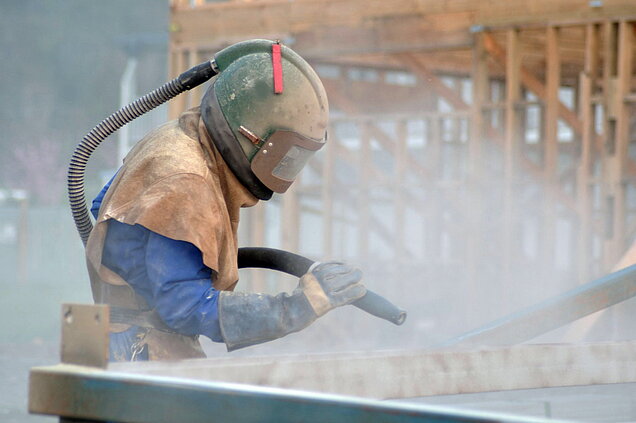LASER CLEANING Versus SHOT BLASTING - LASER CLEANING Versus SAND BLASTING
Blasting, sand-blasting, shot peeing, shot blasting
In particle/SHOT blasting, a blasting medium is accelerated and “shot” at the surface. The mechanical impact mechanically removes the surface layers and dirt. Depending on the blasting material (from baking powder to steel shot), more or less abrasive removal and damage to the base material is possible.
The process can be installed quite easily and with a moderate investment volume and is very flexible. In addition to the disadvantage of surface roughening (which can also be an advantage depending on the application), particle blasting also has some basic disadvantages:
- High energy consumption costs (especially with compressed air blasting)
- No partial application possible, blasting medium can penetrate into critical component areas
- Depending on the technology, mixing of the blasting medium with the ablated layer leads to high waste quantities.
- High wear on blasting nozzles and blasting devices
- High noise and dust exposure requires sound insulation cabins
